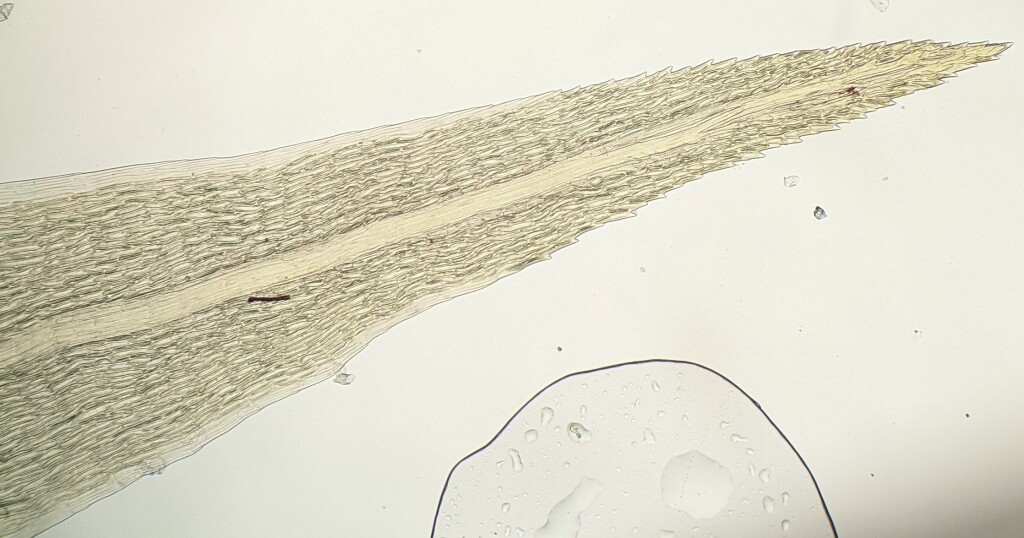Dicranoloma fasciatum
(Hedw.) ParisAsexual reproduction occasionally by rhizoidal gemmae. Turves 2–5 cm tall on soil, rocks, logs or tree bases, yellowish-green to light green. Stems simple or branched, reddish, densely tomentose with pale brown or white rhizoids; central strand present. Leaves falcate-secund, barely altered when dry, lanceolate, 3.7–6 mm long, 0.8–1.1 mm long, canaliculate in basal half, V-shaped in apical half; apex acuminate; costa distinct, subpercurrent, abaxially with two rows of teeth in apical (1/3–) 2/5–1/2; margin serrate in apical 1/6–1/4 (–1/3), entire below, plane, with a border of 3–6 rows of cells extending to serrate part of margin; lamina cells in apical half elongate to linear, 25–99 μm long, 7–14 μm wide; lamina cells in basal half short-linear to linear, 51–187 μm long, 8–15 μm wide; alar cells quadrate to rectangular, 25–89 (–127) μm long, 10–50 μm wide, inflated, with yellowish brown or colourless walls. Seta solitary or up to 3 per perichaetium, 10.5–11.5 mm long, yellowish, smooth. Capsule inclined to vertical, cylindrical, curved, 2.5–3 mm long. Operculum obliquely rostrate from conical base, c. 2.5 mm long.
EGL, WPro, OtR. Reported from a few near-coastal locations (e.g. Lorne, Wilsons Promontory and Cabbage Tree Creek) in wet sclerophyll forest and cool and warm-temperate rainforest. Also New South Wales and Tas. New Zealand. .
Dicranoloma fasciatum is most similar to New Zealand D. plurisetum Dixon. The two species are most easily separated by the shape of the perichaetial leaves, however, perichaetial leaves have not been found in Australian D. fasciatum and identification of Australian plants as D. fasciatum rather than D. plurisetum is based on leaf length, which is shorter in New Zealand D. fasciatum than D. plurisetum (Klazenga 2003). Confirmation of the correct identity of Australian plants as D. fasciatum could be achieved through comparison of DNA sequences between Australian and New Zealand populations of these species or by discovery of plants with perichaetial leaves in Australia.
 Spinning
SpinningKlazenga, N. (2003). A revision of the Australasian species of Dicranoloma (Bryophyta, Dicranaceae). Australalian Systematic Botany 16: 427–471.


